
Wang Shouzhi - born in Guangzhou in 1946 - is an expert in design theory and design history. He was a professor at the Art Center College of Design in the United States, the Dean of the Changjiang College of Art and Design at Shantou University in Guangdong Province, and is currently the Vice Dean of the School of Creativity and Art at ShanghaiTech University.
There is no doubt that China is already the world's largest design education powerhouse - of the more than 3,000 universities in China today, 1,980 have design and art programs, enrolling more than 500,000 design and art students each year.
However, there is still a long way to go before we can go from a design education powerhouse to a design education powerhouse.
In line with the future development, how should China's design education get out of its own way? This reporter interviewed Mr. Wang Shouzhi, Vice Dean of College of Creativity and Art, ShanghaiTech University.
Design is a kind of culture, a kind of cultural lineage that carries on from the top to the bottom
There is no design student in China who does not know Wang Shouzhi.
In the 1990s, Mr. Wang Shouzhi's works such as History of Modern World Architecture, History of Modern World Design, and History of World Graphic Design became the main reference textbooks for design majors in Chinese universities. He is also considered to be one of the founders of modern design education in China.
Mr. Wang Shouzhi, who is of Cantonese ancestry, looks very lean and speaks quickly with a great sense of storytelling.
In September 2019, Wang Shouzhi, who had taught in the United States and in Guangdong, China, for most of his life, came to Shanghai alone at the age of 73 to participate in the preparation of the professional discipline of the School of Creativity and Art at the ShanghaiTech University.
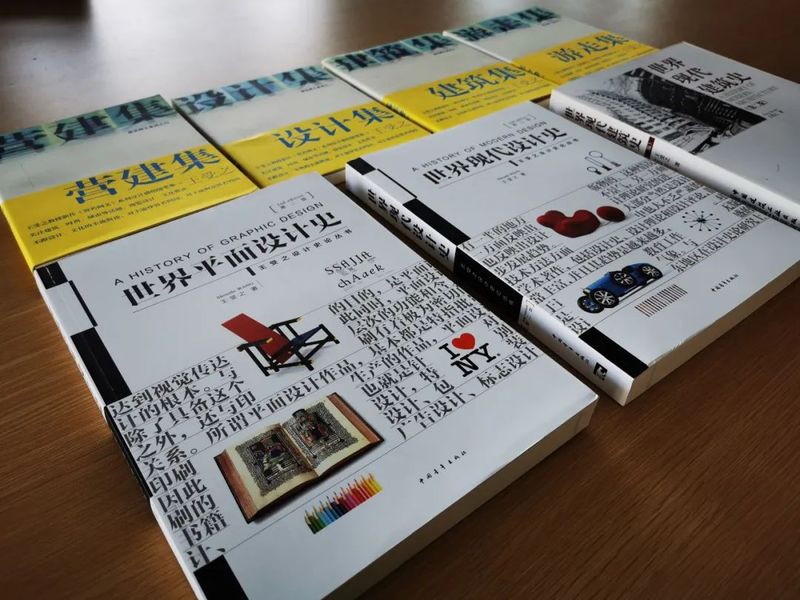
Several important books by Professor Wang Shouzhi
Liberation Weekend: Why did you decide to come to a new college in Shanghai to do the design discipline when you were in your 70s?
Wang Shouzhi: It's a long story. I have to look back at my own experience in modern design research to make it clear.
In the early 1980s, just after the reform and opening up, I went to Guangzhou Academy of Fine Arts to establish the Industrial Design Research Office. At that time, it was obvious to me that there was a big gap between domestic and Western industrial product design, especially in consumer products. I graduated from Wuhan University with a master's degree in history, majoring in American history. Because I was very interested in design, I began my research on design theory in 1982.
Most of the earliest group of scholars engaged in modern design education in China brought back the latest design concepts and knowledge from abroad. For example, Mr. Guanzhong Liu from Tsinghua University, who was sent to Germany to study industrial design at the Stuttgart School of Design in 1981. There is also Mr. Zhang Fuchang from Jiangnan University, who went to Japan to study industrial design at Chiba University. At that time, I mainly learned about the history and current situation of foreign design development through books and materials. Maybe because I studied history, I was more comfortable to study design history, so I became famous in China in my 30s, and became an academic netizen in today's words.
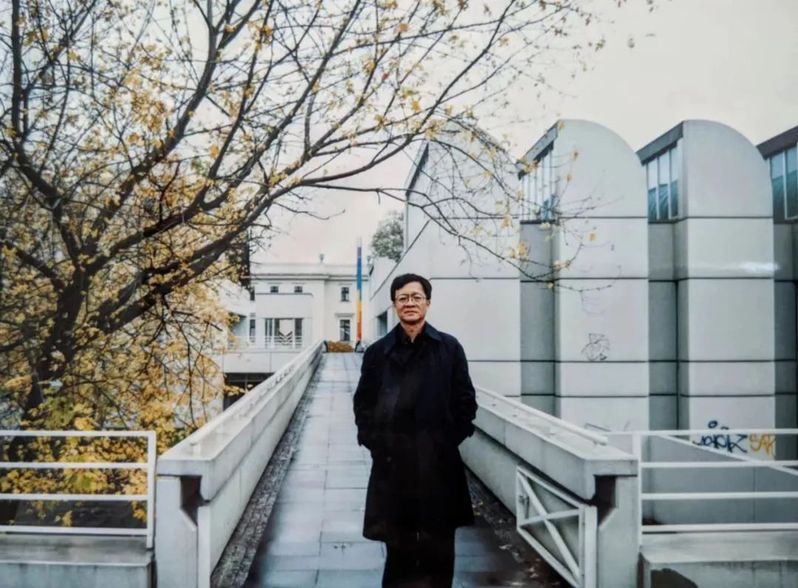
Wang Shouzhi's first visit to the Bauhaus Archives in 1994
Liberation Weekend: What was it like to be an academic netizen at that time?
Wang Shouzhi: I went everywhere to lecture, from Gansu to the northeast, from Beijing to Shanghai. I remember in 1983, the first time I came to Shanghai to give a lecture was at the Shanghai Advertising Art Company on Nanjing Road. At that time, there was no art school in Shanghai, and Shanghai Advertising Art Company was specialized in design, so they asked me to lecture on the history of modern design. At that time, the lecture site was really crowded.
My first book, The History of World Industrial Design, was also published in Shanghai. I remember that the Shanghai People's Art Publishing House on Changle Road was one of the best art publishing houses in China at that time.

Professor Wang Shouzhi's public course on industrial design in Guangzhou in 1993
Liberation Weekend: You still remember the names of the roads in Shanghai so well.
Wang Shouzhi: Yes, I have a very deep impression of Shanghai. I like the sophistication and maturity of the city of Shanghai. That's why I came back to Shanghai to work after decades of going round and round.
After making a name for myself in the domestic academic world, I felt more and more inadequate as my research on design theory deepened. 1984, I came to lecture at the then Hong Kong Polytechnic. In Hong Kong, I saw a very rich material world, and I can say that my eyes were opened wide.
From 1987 to 2011, I taught in the United States. Why did you go abroad in the first place? Because I wanted to have a more open-eyed view.
In 2011, I reached retirement age. Since I was a tenured professor, of course I could continue to teach there. But I felt that continuing to teach in the U.S. was an icing on the cake, while returning home to teach was a blessing in disguise. Why do you say that? Now there are many teachers with study abroad backgrounds who have returned to serve in China, but they all teach design, and almost none of them teach design history. Design history is a class that is crucial for design students. If you don't know the history, your design may just be a technical level of operation. And design should actually be a culture, a lineage of literature that carries on from the top to the bottom. In addition, I have been engaged in design education in the United States for so many years, and I would love to bring those experiences back home.
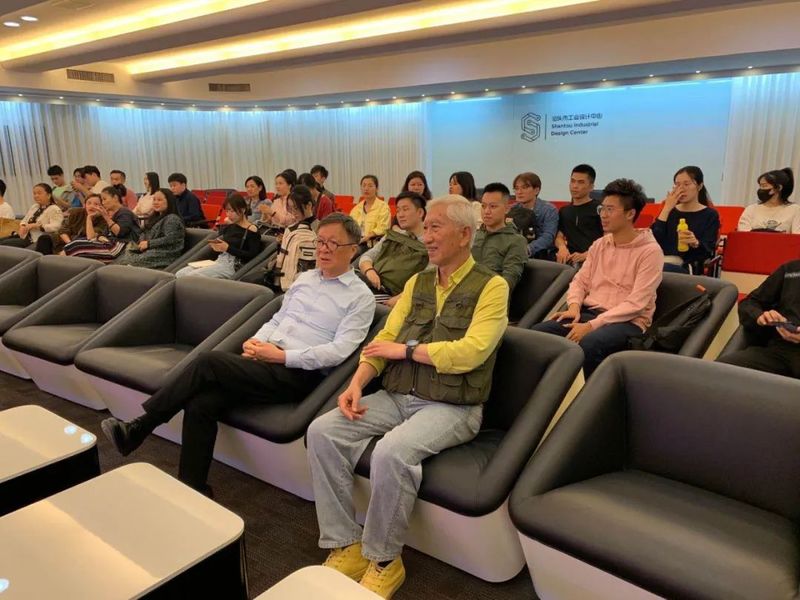
Wang Shouzhi (left) and Professor Liu Guanzhong (right) during his tenure as Dean of the Cheung Kong School of Art and Design at Shantou University
From 2012 to 2018, I served as the Dean of Shantou University's Cheung Kong School of Art and Design. Then, the School of Creativity and Art of ShanghaiTech University happened to create a professional discipline and asked me if I would like to participate, and we hit it off immediately. in September 2019, I officially came to work in Shanghai.
Art and design as a creative culture requires different talents
Wang Shouzhi is the kind of person who belongs on the podium by nature.
He first came to the United States in 1987 as a visiting scholar at Pennsylvania State University, where he also taught some design courses.
He later moved on to teach at the Art Center College of Design, Pasadena, the leading institution in American design education. In 1997, Wang became a tenured professor at Art Center College of Design.
In addition to teaching, he often drives to other universities in the United States to attend lectures. The more schools he visited and classes he attended, the more he was able to observe American design education in depth, and the more he understood the characteristics of American design education.

Wang Shouzhi at Art Center College of Design
Liberation Weekend: What do you think is the most important feature of American design education?
Wang Shouzhi: The most important feature is that there is significant differentiation, each design school has its own characteristics, and students have their own characteristics. And as a creative culture, art and design need different talents to meet different social needs.
There are two types of art schools in the U.S.: one is the art and design department or college that is part of a university, and the other is an independent art and design college. These independent art and design colleges were further divided into two types, one for-profit and one non-profit. At that time, there were 26 independent non-profit colleges of art and design in the United States. Now there may be a few more, but the number is still very small.
When I first arrived in the United States, I used to go to various schools to listen to classes and learn what kind of design schools were the best in the United States. If you want to study art history, then Harvard University's art department is undoubtedly the best, it is the most specialized place to study art history. If you want to study design, then you should choose to go to an independent school of art and design. In the 20th century, there were two independent design schools in the United States that were the most famous, one was the Rhode Island School of Design (Providence), and the other was the Art Center College of Design in Los Angeles, where I taught. When I was comparing, Rhode Island School of Design is a long-established and traditional comprehensive school with specialties such as product design, interior design, and graphic design. The Art Center College of Design, on the other hand, is particularly practical and prominent in product design. It has a transportation tools department, which focuses on the design of cars, airplanes, and other vehicles, as well as a film department and an illustration department. All of these majors are more to my liking, and the course content is more avant-garde, so I chose to teach at the Art Center College of Design.
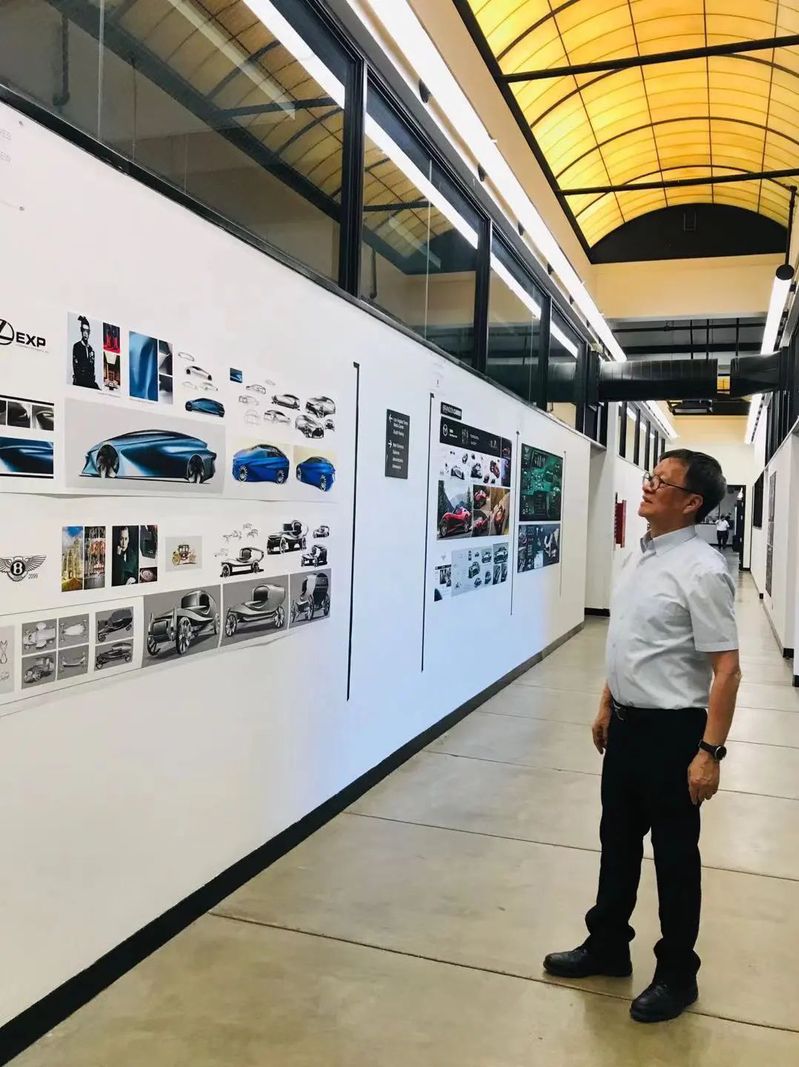
Art Center College of Design student work exhibition
Liberation Weekend: How can the School of Design be different?
Wang Shouzhi: The school will develop a localized teaching system based on market demand. In the U.S., design schools do not have uniform teaching materials or rules, and they have a lot of freedom to run their schools. Take the Art Center College of Design for example, this school had a strange system at that time - it only admitted college graduates or people who had some work experience. And students who graduated from this college also still had their undergraduate degree, which was equivalent to getting a double degree. So, not only did I teach students from dozens of different countries, but I also had students who had originally studied anything, from biology to chemistry to physics, and I even remember one student who had a PhD in philosophy. In general, these students had a very good foundation in the humanities and sciences and progressed very quickly in their studies.
This school was open to the whole world, and the acceptance rate at that time was very low, around 20%. And, there was a system of elimination, so that at the end of the first year, half of the unqualified students would be screened out and the rest would be very promising students.
In essence, this design school is more like an advanced vocational school, which focuses heavily on developing students' skills, creativity and real-world experience. Every year, many of the school's graduates go directly to work for major corporations, such as Disney, Apple, major car companies and movie studios.
Liberation Weekend: How does the school ensure the quality of its education?
Wang Shouzhi: Quality control is diversified. At that time, the school adopted the method of students giving scores to teachers to decide whether to continue contracting with them. At the end of each semester, students would give each teacher a score, and then, after removing the highest and lowest scores, an average score was obtained. If a teacher's score falls below 4.0, the school will no longer contract with that teacher. This design school relies on such a system to keep the good teachers.
In addition, at the school level, there is a rating system. In the United States, independent schools of art and design and the art and design departments or colleges of comprehensive universities form an academic consortium called the National Council of Schools of Art and Design. The scores of each school are published every four years through mutual review and scoring. Schools with low scores naturally do not attract more students. They ensure the quality of education of the school in this way.
I think that American schools do things very differently from us because the system and background are very different. But anyway, learning from their strengths and making up for our weaknesses should be something we can do.

Wang Shouzhi at the defense of his doctorate at the China Academy of Art
They tend to have good skills, but lack brainy ideas.
In 1946, Wang Shouzhi was born in Guangzhou into a family of scholars. His body bears the lingering imprint of traditional Chinese culture.
His grandfather, Wang Renyu, studied at the Imperial University of Japan in the late Qing Dynasty and was the Dean of the Guangdong Provincial Industrial College. His father was a music teacher at the Guangdong Provincial Art College, his mother worked at the Zhongshan Library, and his uncle Zhou Lingzhao was a master art designer who designed the national emblem.
After returning to China from the United States, Wang Shouzhi kept trying new educational models and traveling around to give lectures. He was always haunted by one thought: When will China's design catch up with foreign countries?
He said, I have to try to pave the way and let the students go right.

Professor Wang Shouzhi's Fifth Park architectural project of Vanke
Liberation Weekend: A common view is that Chinese design creativity seems to be no match for that of foreign countries. Has this situation changed in recent years?
Wang Shouzhi: Indeed, as more and more people go abroad and there are more and more exchanges between China and the West, the level of Chinese design has also improved significantly. For example, Chinese car design is very smooth and well done in details, and there is no big difference compared with foreign countries. However, in terms of creativity, especially in the design of information and cultural products, there is still a big gap between the Chinese design creativity and the international advanced level.
When it comes to the gap in creativity, I think it is not only a problem of design education, but a deep-rooted education problem. Since kindergarten, we have taught our children to recite the Three Character Classic, Tang poems and so on. I remember when I was studying in elementary school, I had to put my hands behind my back and people had to sit up straight, very strict. Chinese culture pays more attention to rules. Moreover, the Chinese say Heaven and earth, the king and the teacher, the teacher has an unshakable authority, the teacher how to speak, the students have to listen carefully.
But in fact, this traditional concept on the other hand, prevented students and teachers to have equal dialogue and discussion. In the U.S., I spend two hours of a three-hour class discussing issues and even arguing with students, creating interesting sparks of ideas in the process, while in China, I spend most of a class lecturing to the students.
There is often a phenomenon that an average student in China suddenly becomes a top student after going abroad. Because the environment abroad encourages excellence and encourages you to bring out your own characteristics. Whereas much of our education encourages children to do as they are told and encourages everyone to do what the standard answers say. So I hope that in the classroom, I can give students more inspiration to find more answers, and that's what I try to do.
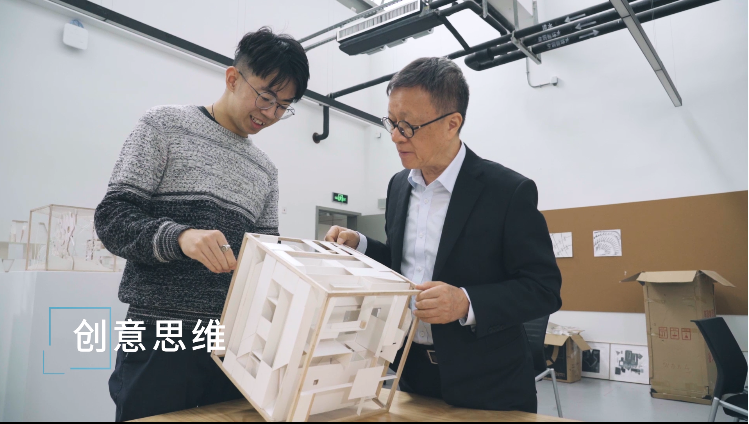
Professor Wang Shouzhi participated in teaching Creative Thinking to lead students to design the spatial transformation from 2D to 3D
Liberation Weekend: What problems do we still have in design education?
Wang Shouzhi: Previously, design education was built on the basis of art education, so students were required to have the basic skills of drawing and coloring. But are these basic skills of drawing and painting the basic skills of the design profession or not? I don't think so. From my teaching experience over the years, the more students with drawing skills, the more design talents are produced to focus on one type, they often have good skills but lack the kind of brainstorming ideas.
In addition, domestic design schools generally have the problem of disproportionate number of teachers and students.
For design majors, I think a teacher-student ratio of 1:7 or 1:6 is more reasonable. In other words, one teacher with six or seven students. Because design education is the soul of originality, design courses are operational and instructive, unlike language classes, where 100 people can listen and take notes at the same time, and then take a unified exam. In a design class, everyone encounters different problems. For example, to design a cup, everyone has different ideas and designs different cups, which requires constant communication between the teacher and the students. A teacher can barely manage to tutor 10 students, but if you have to tutor 20 or even 30 students, the class will not be effective. This is like a bowl of soup, a small bowl of soup put a little salt, the taste is fresh enough; but if it is a large tank, or put this salt, it is bland and tasteless.
The main reason for this problem is because of the high fees of art colleges and universities, so many universities swarmed to open art and design departments (or colleges), thus leading to a serious shortage of teachers' resources. The good thing is that this problem has now attracted the attention of the education department.
Liberation Weekend: What qualities do you think teachers engaged in design education must have?
Wang Shouzhi: In my opinion, teachers engaged in design education must have two qualities: the first is sensitivity. To be able to observe things and find problems, and to be able to solve problems sensitively. Design is ultimately an ability to find problems and solve them, and teachers must first have this ability. The second is that the teacher must pass on this ability to his or her students, so that the students also have this ability. This is the quality that a good teacher must have.
I think the biggest problem of Chinese design education is not the students, but precisely the teachers. Compared with foreign countries, China lacks a group of instructors who can make design education flourish. Homogeneous teachers educated in a traditional mode cannot produce students with real creative thinking and problem-solving ability.
Creating an atmosphere that creates the conditions for the creation of Jobs and Musk
The College of Creativity and Arts of ShanghaiTech University is housed in four simple, modern, four-square buildings. The college is currently in the stage of preparing professional disciplines and plans to admit the first batch of new students in the next two years.
Every day, Mr. Wang Shouzhi is on the move between his office and dormitory. In addition to meetings and recruiting staff, he is also in charge of many small things, such as what office furniture to buy and how to decorate the environment. What little spare time he has is spent on painting and decorating the walls of the building.
For Wang Shouzhi, who is 75 years old this year, this is another new start in his life.
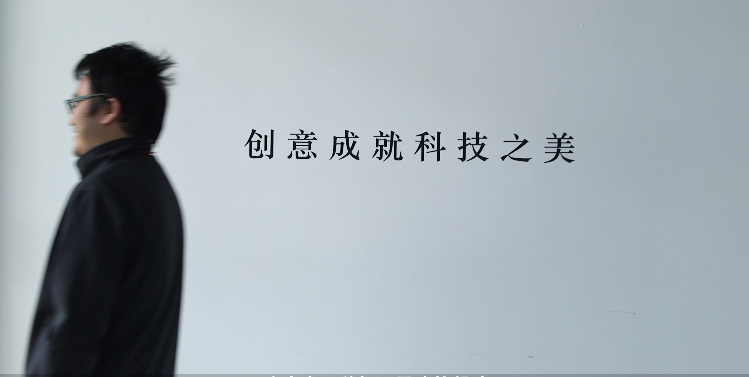
A view of the School of Creative Arts at SUSTech
Liberation Weekend: This design discipline in the pipeline will be different in the future, right?
Wang Shouzhi: You can really say that. First of all, all of our students will be science and engineering students, not arts students, and not art students. The University of Shanghai for Science and Technology is a research university with a focus on cutting-edge science and technology.
Of course, we also face great challenges. These students have a strong science and technology background, for example, they all know computer programming, but their artistic literacy and taste need to be improved. At the same time, how to combine their strengths in science and technology with design to design products that meet the needs of users will also be a difficult teaching point.
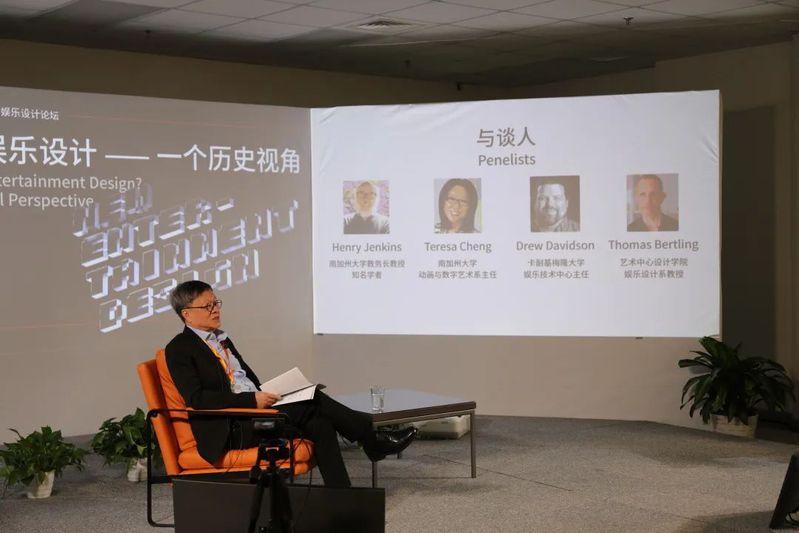
The first Entertainment Design Forum will be held at the School of Creative Arts, SUSTech in October 2020
Liberation Weekend: I heard that the college will open a new entertainment design program?
Wang Shouzhi: In foreign countries, entertainment design has already started to appear. However, there is no such major in China yet, so we should be the first one in China to propose it. Entertainment design is an experience design that combines narrative, aesthetics and technology, and it must be a fusion of culture and industry.
When I was teaching in the United States, I offered an elective course called Introduction to Entertainment Design. At that time, I found that there were students who studied illustration, film, and prop making, and they were all doing entertainment-related things, so I combined these contents and started this course. It didn't take long for the school to create an entertainment design department. Now, the Entertainment Design Department is the largest department in the Art Center College of Design, with 1/4 of the total number of students.
I went to the United States in the 1980s and watched the American entertainment industry become bigger and bigger. Our domestic entertainment market has grown rapidly over the years, and the production of television series, for example, is high, but our films are basically shown domestically and rarely actually reach the international market. Why? One of the major reasons is that we lack a big strategy of entertainment design.
In the United States, the most successful example of an entertainment design strategy is Marvel Studios. Marvel has a position called project management. When they made the first Iron Man, they thought of the second, third and later parts, and thought of the whole picture. It's like making a Water Margin, can't you pull out a story line of Lin Chong horizontally and make another 5 episodes of Lin Chong's other story? We have a lot of rich story resources, but what we do is to adapt from the original story, lacking design and creative strategies. I believe that as long as students have the ability of narrative and visual expression, they can work in various entertainment-related jobs after graduation.
Nowadays, some design schools in China are getting more and more finely divided into majors, and some even offer more than a dozen majors. But we don't want to turn students into minutiae, but to cultivate them into composite talents. Our College of Creativity and Arts plans to open two majors, Entertainment Design and Intelligent Design, and I believe they are exactly a piece of soil for cultivating composite talents.
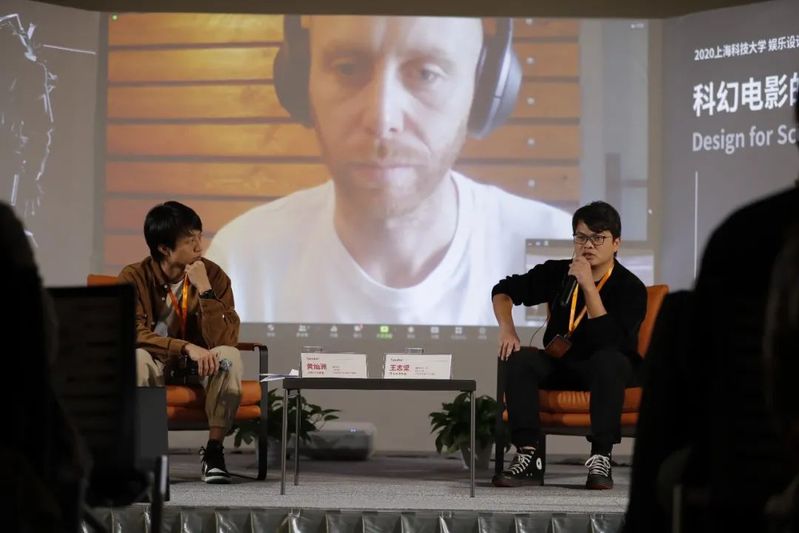
Entertainment Design Forum Conceptual Design of Science Fiction Film Sub-forum
Mike Hill (center), concept designer of Blade Runner 2049, Huang Canzhou (left), visual effects director of Wandering Earth, and Wang Zhijian (right), art design director
Liberation Weekend: What did you find to be the most difficult part of starting this design discipline?
Wang Shouzhi: The most difficult part was finding teachers. Nowadays, part-time teachers are generally discouraged in domestic universities, especially in research-oriented schools, and there are even fewer part-time teachers. But the characteristic of our profession is that what we teach is the latest content in the front line of the industry, which is changing day by day. For example, video games that were played 3 years ago are no longer played. Therefore, we need a considerable number of part-time teachers, and they are the top people at the forefront of the industry. Fortunately, Shanghai has a large concentration of talent in the entertainment industry, which provides us with unique conditions.
It's a hard thing to do, we're doing something that hasn't been done before, running a design discipline that hasn't been done before; but I'm looking forward to the first new generation of design talent that this institute will produce for the country. Like Steve Jobs, like Elon Musk, they may not be the kind of people that schools can produce, but I think: can our schools create an atmosphere that creates the conditions for this kind of talent to emerge? That's my dream.
School of Creative Arts intends to enroll the first batch of industrial design undergraduate students in the fall of 2021. For more information, please follow Creative Arts public website.



